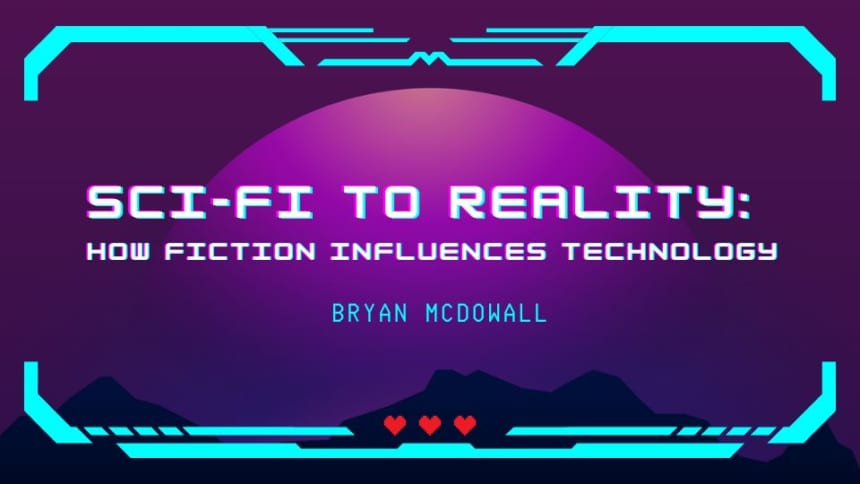Throughout my life I been captivated by many forms of fictional media. But in my career as a visual designer in the technical field, nothing offers greater inspiration than science fiction.
To explain why it’s so important to me personally, it helps to establish a few things about my background…
I haven’t always lived in Tokyo. I was born 30-something years ago in Scotland, and raised in a small village called Markinch. It currently has a population of around 2,400, a number which is dwarfed by Tokyo’s 14.2 million.

My sleepy home-village, Markinch.
Furthermore, in the year 2000, when I was in my early teens and choosing my high school subjects: - Diablo 2 had recently been released on PC - I had a 56kbps dial-up modem (in my Sega Dreamcast!) - The first iPhone would not be released for another 7 years
It might seem unlikely that a young person in this environment would go on to design hi-tech applications in the biggest city in the world.
Thankfully, such an opportunity happened at the end of last year following my application to Colorkrew. Following a series of interviews, my skills and experience were determined to be in alignment with the company’s business goals, and I was assisted in relocating to Japan in mid-Spring this year.
Inspiration from science fiction
A lot of my early inspiration came from my older brother’s comics, library books and television. In this sense, I had many different worlds and perspectives to fuel my imagination.
Long before I had access to a personal computer or the internet, I would draw my ideas (or build things using Lego), quite often attempting to copy the technology I saw on the screen. It’s the combination of these things, I believe, that lead me to creating interfaces for games and applications, and to my current role within the Colorkrew team.
Animation
Retro Futurism is often considered the optimal outcome; a scientific eutopia featuring living spaces above the clouds, friendly service robots, flying cars and entire meals in a single pill. It’s a vision which was especially popular in the 1960s, as artists and film-makers tried to imagine what the future could look like.
The Jetsons are a popular western example of the eutopian family then, with their sassy mouthed robot maid Rosie.
Whilst we don’t have humanoid servants, it’s not uncommon to see automated vacuums (and even lawnmowers) in modern houses.
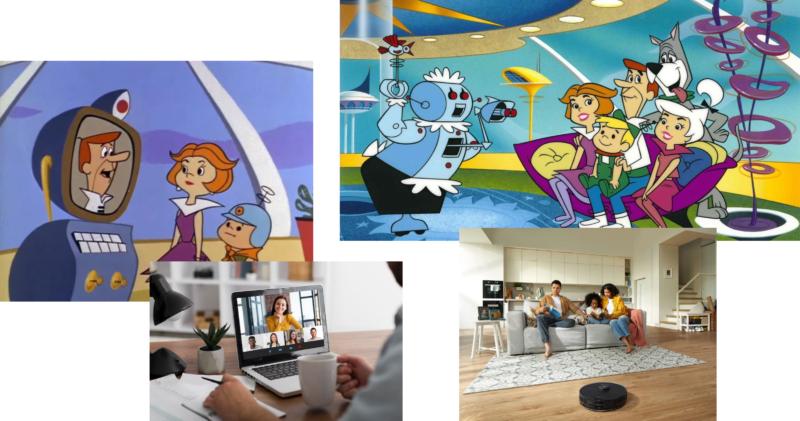
The Jetsons also popularised the concept of video calls - which during lockdown, many workers became more familar with through online meetings.
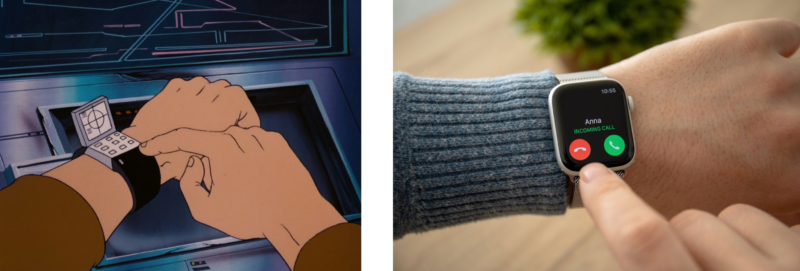
Jonny Quest was the envy of all kids when he used his “commu-con watch”, which let him speak with other wearers. More recently, people can recieve calls on their Apple Watch using a digital sim, and unlike Jonny’s watch, the real one is waterproof also!
Star Trek
The long-running space franchise was first broadcast in 1966, and almost 70 years later continues to inspire with not only far-fetched technology, but also the dangers inherrent in exploring the unknown.
One such technology is the recreational holodeck, where crew members can enjoy fully immersive simulations. Whilst we haven’t achieved full 3D holograms yet, the technology is continually improving.
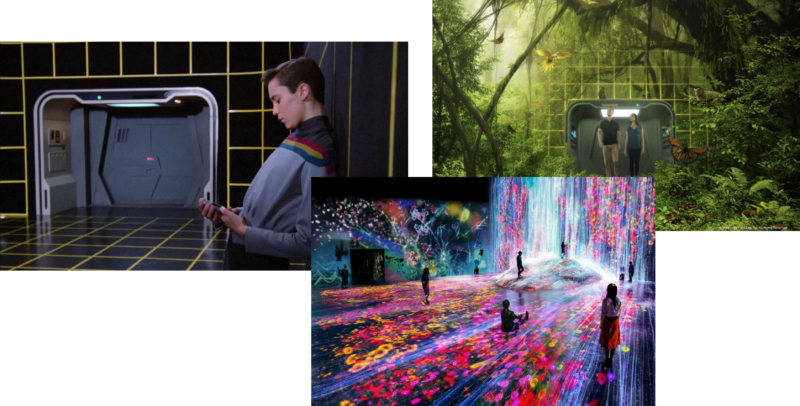
I was lucky enough to visit Team Labs exhibition space in 2018, which created breathtaking enviornments using light projection mapping over various materials and terrians. Combined with audio, it made for a truly incredible experience.
Star Trek: The Next Generation swapped blinking lights and switches for interactive glass panels.

Keeping in mind, these devices were first seen on TV 23 years before the first iPad was released, but now these interfaces are incredibly common - in izakaya, supermarkets, arcades. Also as personal computers with a huge range of applications.
3D Printing has become popular in the past decade for both personal and commercial use, with everything from food to houses are subject to replication.
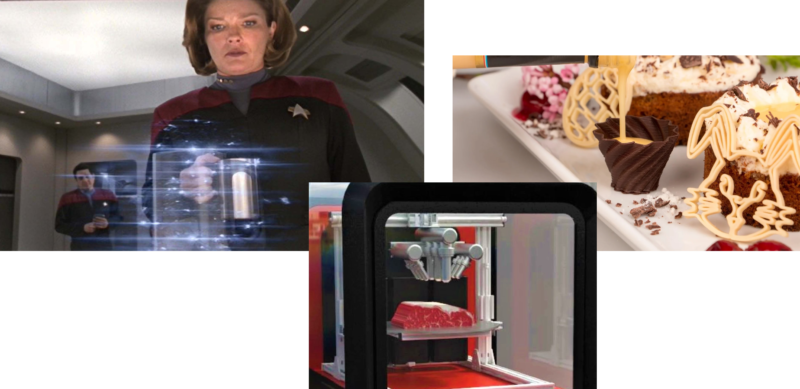
Although the technology is slow currently, it’s not impossible to imagine a future where we can replicate anything at speed using similar techniques - just like the replicators onboard star ships.
Exploring morality

“Technology is a tool. It’s not good or bad in itself. It all depends on how it’s used, like any tool.” Kusanagi Motoko (Ghost in the Shell)
One of the greatest teachings science fiction offers, is the ability to safely imagine the implications of a particular technology.
Quite often we read about breakthrough technology, or a new gadget which will come to market only to greatly upset its intended audience (does anyone remember the coffee machine with DRM?). Admitedly, the themes in science fiction are typically more far-fetched and sometimes even alien in their environment, but they still explore humanely relatable concepts.
Consider the award winning television series Black Mirror, which explores themes of technology and their social impact.
One such episode (S02E01: Be Right Back) considers the implications of an AI clone, which is produced using someone’s entire social media history and online communications.

The uncanny valley - memories of a departed lover resurected from web activity in Black Mirror
The episode is unsettling not because the product malfunctions in a Frankenstein’ish way, but because it operates entirely to its creators’ specification. We see the emotional distress caused to a grieving widow, by a near perfect copy of her deceased husband, and how she tries to rationalise the reality vs the ideal.
The episode originally aired in 2013 (before the first ChatGPT research documents were pulished), but with modern trends in AI and the speed at which they are developing, this scenario feels so much closer to being realised.
As an ethical provider of AI services, it’s also important for us to also consider the impications of this technology on the people that use it.
Challenges of new technology

Today many people are connected 24/7. It’s almost unimaginable that someone could struggle to find information on a given subject. However this firehose of information could prove to have its own inefficiencies, just as analogue methods once did. When all of the information in the world is available with a simple search query, how can you tell what’s truly important?
Furthermore, with improvements in automation, will it become increasingly demotivating (for younger people especially) to invest time learning techniques and skills to create wondrous new things?
Improving abilities which take people years to learn, and the outcomes of which are not guaranteed, becomes much harder to encourage. It’s demotivating when “a machine” can do it instead, much faster.
When I was growing up, I longed for the technologies and experiences in my favourite science fiction largely as a result of my disconnected life in rural Scotland. What is certain, is that nurturing the imagination and passion of younger generations, rather than entirely promoting the outcomes of hard work becomes more important than ever.
What’s next?
I consider myself lucky, to have had such an incredible career so far. I have gained so much experience, designing and creating modern interfaces in various fields over the past 15 years, and I can’t help but wonder what the nature of my job as a designer will look like in another 15 years from now. Given the current pace of technology, even imagining 5 years is difficult!
My time in Japan will offer new perspective and I can adapt to what I learn, but regardless of what I create next, I hope my work will continue to have a distinctly human feel.
Media sources: The Jetsons and Jonny Quest, copyright © WarnerMedia Star Trek: The Next Generation and Star Trek: Voyager, copyright © Paramount Pictures Ghost in the Shell copyright © Kodansha Ltd Black Mirror copyright © Netflix
